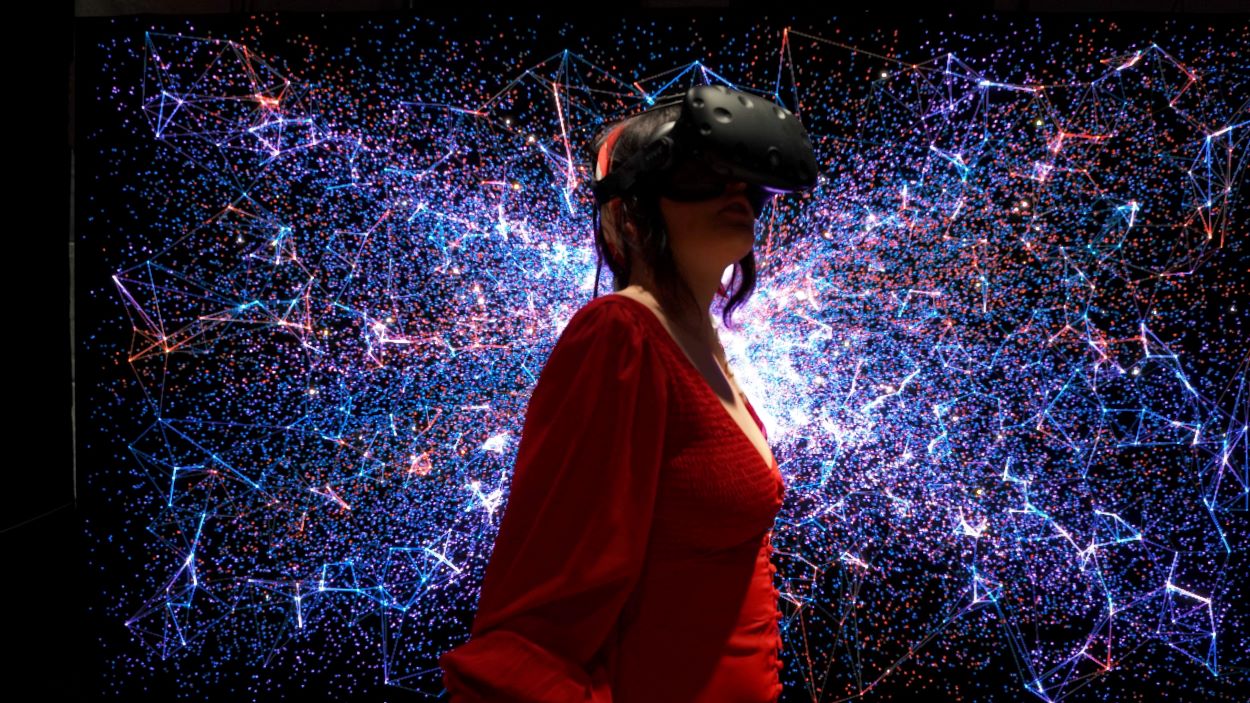
There’s a 1995 clip of The David Letterman Show where Letterman is interviewing Bill Gates. Gates excitedly explains how the internet will change the future. Letterman is sceptical. He mentions a recent baseball game that went live on an internet broadcast. “Does radio ring any bells?” he quips sarcastically, to laughter from his audience.
It’s natural to approach new advances in technology with the same level of derision or even fear. Since Facebook Inc rebranded to Meta in November of 2021, much has been said about the virtual future we’ll all supposedly be participating in soon. Some even call the metaverse and its supporting architecture “Web 3.0”. In other words, the next step in the evolution of the internet. The two basic doctrines of this vision are:
- Business, shopping and recreation can all take place on either a virtual or augmented reality platform.
- Blockchain, cryptocurrency and non-fungible tokens (NFTs) will become the preferred vehicle for ownership, investment and trade.
Whether you like it or not, figures like Mark Zuckerberg seem intent on making this dream a reality. Meta has gone all-in on Horizon Worlds (their version of a metaverse), sinking an estimated $US10 billion into it in 2021 alone. Profits are down for the company, but the expected return is supposedly great enough to warrant such a sacrifice. Zuckerberg isn’t the only player in the game, though. Microsoft is reportedly interested in the space, as illustrated by its recent acquisition of gaming behemoth Activision Blizzard (responsible for World of Warcraft, one of the first metaverses). Apple has been quietly working on its own product for several years, as has Google. We can assume then, despite the unknowns, that eventually, every player in big tech will have a platform of their own. Meta is hoping to beat its competitors to the punch. Unless any of them make a surprise announcement soon, Horizon Worlds will likely be the first taste most of us will have of the metaverse.

So, what will this metaverse world look like?
1. BUSINESS, SHOPPING AND RECREATION CAN ALL TAKE PLACE ON EITHER A VIRTUAL OR AUGMENTED REALITY PLATFORM.
Take a day in the life of virtual reality. You might start the morning sipping on your beverage of choice. You’ll reach for an augmented reality pair of glasses to review your emails, watch trending videos or catch up on the latest news headlines. Then, you’ll move to your home office to put on a Virtual Reality headset and check in with your team.
Maybe you’re hailing from Vanuatu while your manager is in Auckland and your team members are scattered around Australia, New Zealand and the islands. Regardless of your physical location, VR means you’ll all appear to be in the same work environment. Think of it like one of those sci-fi council meetings with a physical board room and some participants attending in person while others appear as holograms.
After finishing work, you will switch off and go shopping in a metaverse shopping centre. That being a digital reconstruction of a conventional mall replete with all your favourite brands and chains. Or perhaps you’d rather go to a virtual art gallery with your friends to look at all the latest NFTs by your favourite artists. Then, to end the evening, you might attend a concert, watch a sporting event or movie with your friends in a virtual venue.
2. THE BLOCKCHAIN, CRYPTOCURRENCY AND NFTS WILL BECOME THE PREFERRED VEHICLE FOR OWNERSHIP, INVESTMENT AND TRADE.
This one is more difficult to imagine considering the unstable world we live in. The crypto scene is in constant flux, as is the NFT market it is inescapably married to. To comment on specifics now would be pointless as, from the time of writing to the time you read this, the market will have changed dozens of times. Dips and rises will continue as long as crypto needs to be validated using real-world currency. Herein lies the problem with the vision of a metaverse using an in-house crypto token to make purchases and regulate its economy.
Think about it this way: imagine you’re heavily invested in the fictional MoonWorld. It’s a metaverse world that runs on mooncoins, all powered by the blockchain. Say you want to buy an NFT to hang on the wall in your virtual house. On Monday your mooncoins are worth $1 each, so you spend 30 of them to buy a nice NFT of a monkey eating a banana (you’re a true art connoisseur). By Tuesday mooncoins are skyrocketing in value, meaning your $30 investment is now worth $100. Overjoyed, you buy more mooncoins to spend on more NFTs to make more money. By the following week, however, a major shareholder in MoonWorld’s parent company sells all their shares and there’s a major dip. In re sponse, a large proportion of the userbase panic-sells which causes hyperinflation. Now your mooncoins and the NFTs you bought are worth pennies and you’re on the hook for hundreds of wasted dollars.

You’re right if you think this is extreme. The sad reality is that there are already real-world parallels. In May 2022, the popular Terra blockchain crashed, along with its two coins. TerraUST plunged from $US1 to 10 cents and its other coin, TerraLuna, fell from a high of almost $US120 to less than one cent. While this was just two tokens, it is illustrative of the worst-case scenario.
While the economies of these exciting new platforms are based on real-world currencies, they will always be vulnerable to outside manipulation, whether from the share market, global wars or real-world inflation. As long as crypto exists primarily as an alternative to shares, it will never be used as a legitimate currency. A select few will always see it as either a get-rich-quick scheme or as a platform to scam others hoping to go “to the moon”.
So, does that mean there’s no value in Zuckerburg’s seemingly too-good-to-be-true future? Like most things, the truth is not on the extremes but somewhere in the middle. We’d be wise to remember that technology has always been a tool and how we use it is up to us. Advances in technology rarely work out exactly the way their inventors intend (for better or worse). The metaverse may be the next step in the evolution of the internet in the same way the iPhone, YouTube and social media became the next step after the internet of the late ’90s.
More ways to connect with friends, family and work colleagues is always good. But in the same way that advances in smartphone technology created unforseen societal problems, if the metaverse becomes a reality in our everyday lives and we fail to navigate it wisely, it will be to our detriment. It will certainly give us more opportunities for connection than ever before but we should be wary. If we’re not careful, this brave new world could end up being the one Liam Proven writes about in The Register when he says that Web 3.0 is “a myth, a fairy story. It’s what parents tell their kids about at night if they want them to grow up to become economists4.”
Jesse Herford is a pastor and associate editor for Signs of the Times magazine. He lives in Sydney, Australia with his wife, Carina and their dog, Banjo.









